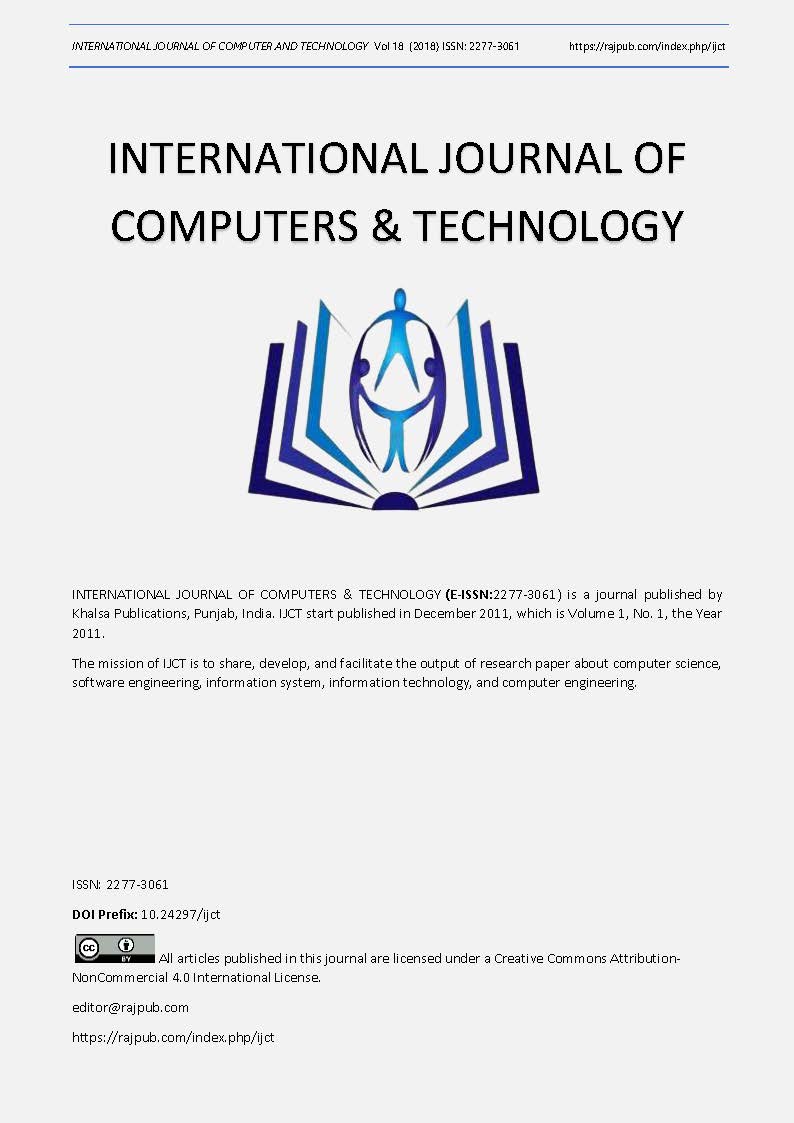Face Detection & Recognition using Tensor Flow: A Review
DOI:
https://doi.org/10.24297/ijct.v18i0.7924Keywords:
Face recognition, machine learning, tensorflow, Face detectionAbstract
Face recognition has become a popular topic of research recently due to increases in demand for security as well as the rapid development of mobile devices. There are many applications which face recognition can be applied to such as access control, identity verification, security systems, surveillance systems, and social media networks. Access control includes offices, computers, phones, ATMs, etc. Most of these forms currently do not use face recognition as the standard form of granting entry, but with advancing technologies in computers along with more refined algorithms, facial recognition is gaining some traction in replacing passwords and fingerprint scanners. Ever since the events of 9/11 there has been a more concerned emphasis on developing security systems to ensure the safety of innocent citizens. Namely in places such as airports and border crossings where identification verification is necessary, face recognition systems potentially have the ability to mitigate the risk and ultimately prevent future attacks from occurring. As for surveillance systems, the same point can be made if there are criminals on the loose. Surveillance cameras with face recognition abilities can aide in efforts of finding these individuals. Alternatively, these same surveillance systems can also help identify the whereabouts of missing persons, although this is dependent on robust facial recognition algorithms as well as a fully developed database of faces. And lastly, facial recognition has surfaced in social media applications on platforms such as Facebook which suggest users to tag friends who have been identified in pictures. It is clear that there are many applications the uses for facial recognition systems. In general, the steps to achieve this are the following: face detection, feature extraction, and lastly training a model.
Downloads
References
Bernd Heisele, Purdy Ho, Jane Wu, Tomaso Poggio Face recognition: component-based versus global approach Computer Vision and Image Understanding. February 2003.
Guodong Guo, Stan Z. Li, Kap Luk Chan Support vector machines for face recognition. Image and Vision Computing. January 2001.
Harihara Santosh Dadi, Gopala Krishna Mohan Pillutla Improved Face Recognition Rate Using HOG Features and SVM Classifier. IOSR Journal of Electronics and Communications Engineering, Vol. 11, Issue 4, pp 34-44, July 2016.
Navneet Dalal and Bill Triggs Histograms of Oriented Gradients for Human Detection. Proceedings of the 2005 IEEE Computer Society Conference on Computer Vision and Pattern Recognition. 2005.
O. Deniz, G. Bueno, J. Salido, F. De La Torre Face recognition using Histogram of Oriented Gradients Pattern Recognition Letters. 2011.
P. Jonathon Phillips Support Vector Machines Applied to Face Recognition. National Institute of Standards and Technology
Qiang Zhu, Shai Avidan, Mei-Chen Yeh, Kwang-Ting Cheng Fast Human Detection Using a Cascade of Histograms of Oriented Gradients. Proceedings of the 2006 IEEE Computer Society Conference on Computer Vision and Pattern Recognition. 2006.
Y. Atoum, Y. Liu, A. Jourabloo, and X. Liu. Face anti-spoofing using patch and depth-based cnns. In IJCB, pages 319–328. IEEE, 2017.
A. Bansal, C. Castillo, R. Ranjan, and R. Chellappa. The dos and don'ts for cnn-based face verification. arXiv preprint arXiv:1705.07426, 5, 2017.
A. Bansal, A. Nanduri, C. Castillo, R. Ranjan, and R. Chellappa. Umdfaces: An annotated face dataset for training deep networks. arXiv preprint arXiv:1611.01484, 2016.
J. Bao, D. Chen, F. Wen, H. Li, and G. Hua. Cvae-gan: fine grained image generation through asymmetric training. arXiv preprint arXiv:1703.10155, 2017.
J. Bao, D. Chen, F. Wen, H. Li, and G. Hua. Towards open-set identity preserving face synthesis. In CVPR, pages 6713–6722, 2018.
P. N. Belhumeur, J. P. Hespanha, and D. J. Kriegman. Eigenfaces vs. fisherfaces: Recognition using class specific linear projection. IEEE rans. Pattern Anal. Mach. Intel., 19(7):711–720, 1997.
J. R. Beveridge, P. J. Phillips, D. S. Bolme, B. A. Draper, G. H. Givens, Y. M. Lui, M. N. Teli, H. Zhang, W. T. Scruggs, K. W. Bowyer, et al. The challenge of face recognition from digital point-and-shoot cameras. In BTAS, pages 1–8. IEEE, 2013.
S. Bianco. Large age-gap face verification by feature injection in deep networks. Pattern Recognition Letters, 90:36–42, 2017.
V. Blanz and T. Vetter. Face recognition based on fitting a 3d morphable model. IEEE Transactions on pattern analysis and machine intelligence, 25(9):1063–1074, 2003.
N. Bodla, J. Zheng, H. Xu, J.-C. Chen, C. Castillo, and R. Chellappa. Deep heterogeneous feature fusion for template-based face recognition. In WACV, pages 586–595. IEEE, 2017.
K. W. Bowyer, K. Chang, and P. Flynn. A survey of approaches and challenges in 3d and multi-modal 3d+ 2d face recognition. Computer vision and image understanding, 101(1):1–15, 2006.
K. Cao, Y. Rong, C. Li, X. Tang, and C. C. Loy. Pose-robust face recognition via deep residual equivariant mapping. arXiv preprint arXiv:1803.00839, 2018.
Q. Cao, L. Shen, W. Xie, O. M. Parkhi, and A. Zisserman. Vggface2: A dataset for recognising faces across pose and age. arXiv preprint arXiv:1710.08092, 2017.
Z. Cao, Q. Yin, X. Tang, and J. Sun. Face recognition with learning based descriptor. In CVPR, pages 2707–2714. IEEE, 2010.
T.-H. Chan, K. Jia, S. Gao, J. Lu, Z. Zeng, and Y. Ma. Pcanet: A simple deep learning baseline for image classification IEEE Transactions on Image Processing, 24(12):5017–5032, 2015.
B. Chen, W. Deng, and J. Du. Noisy softmax: improving the generalization ability of dcnn via postponing the early softmax saturation arXiv preprint arXiv: 1708.03769, 2017.
B.-C. Chen, C.-S. Chen, and W. H. Hsu. Cross-age reference coding for age-invariant face recognition and retrieval. In ECCV, pages 768–783. Springer, 2014.
D. Chen, X. Cao, L. Wang, F. Wen, and J. Sun. Bayesian face revisited: A joint formulation. In ECCV, pages 566–579. Springer, 2012.
D. Chen, X. Cao, F. Wen, and J. Sun. Blessing of dimensionality: High Dimensional feature and its efficient compression for face verification. In CVPR, pages 3025–3032, 2013.









